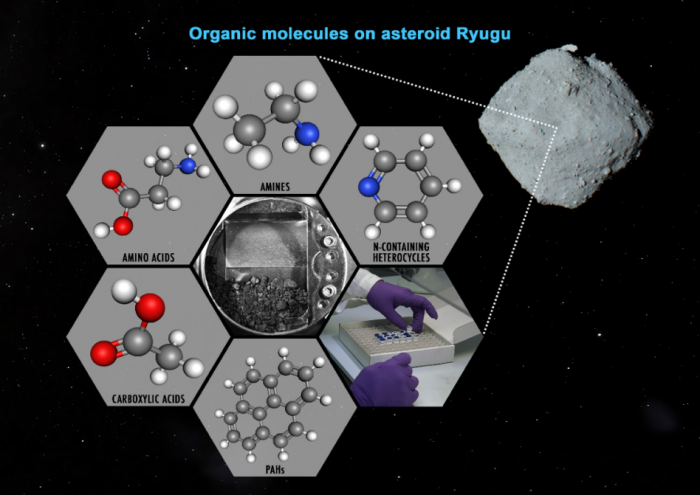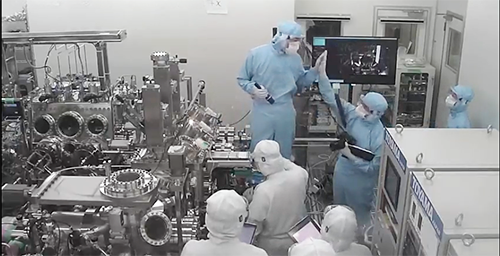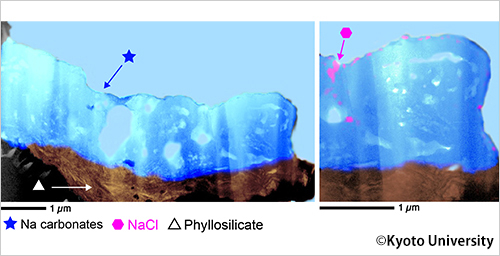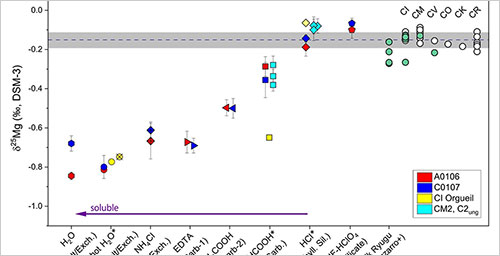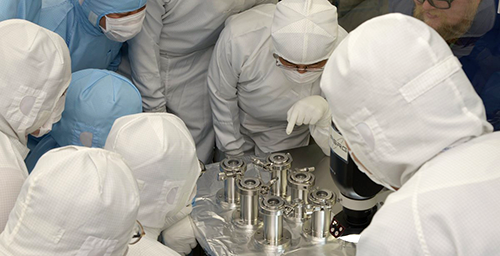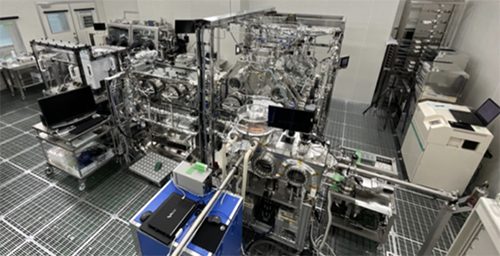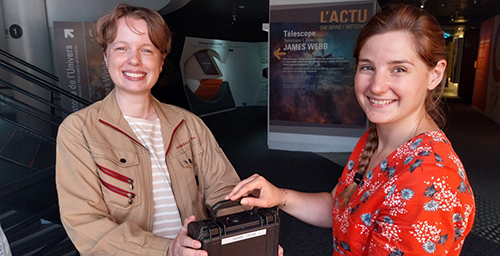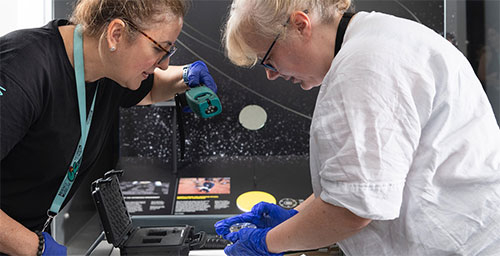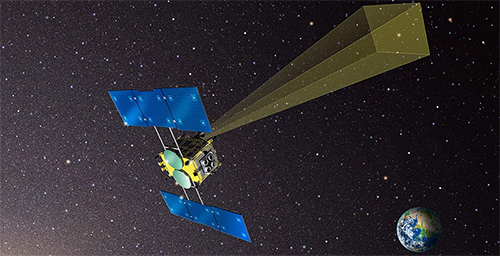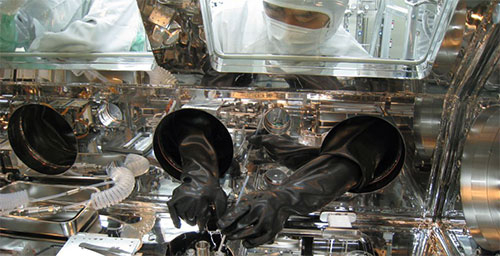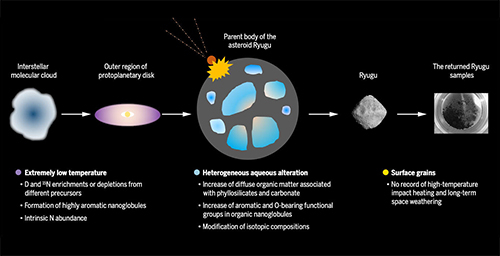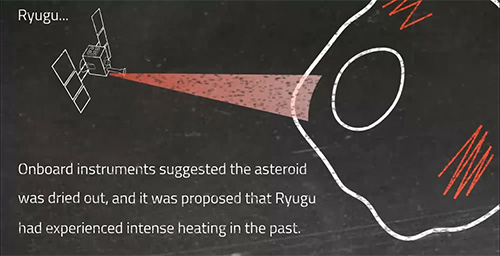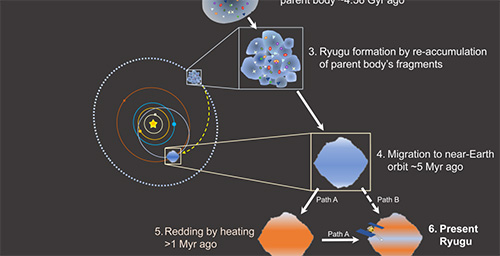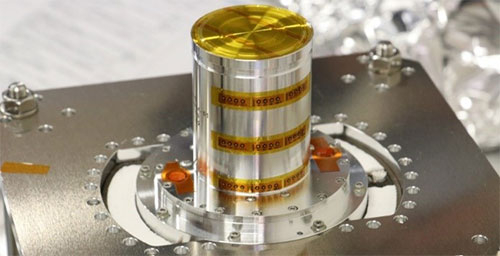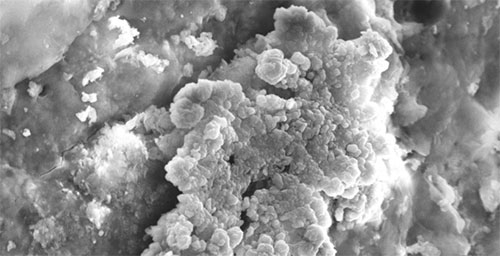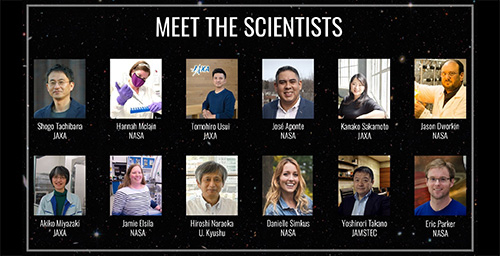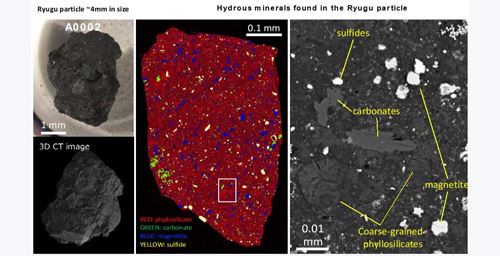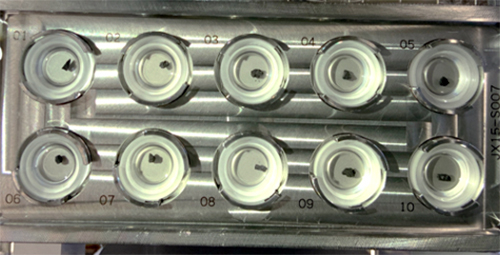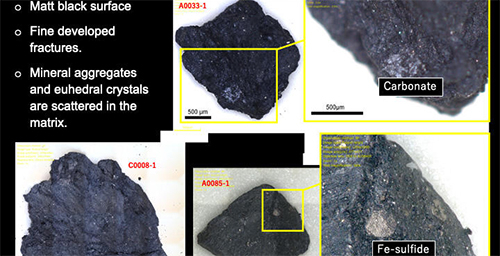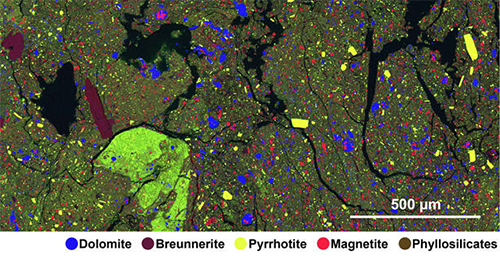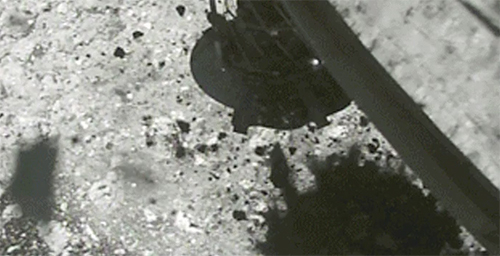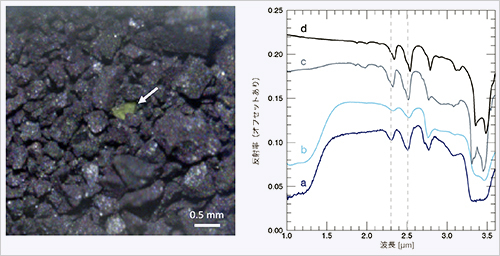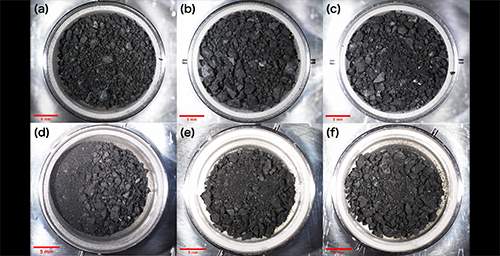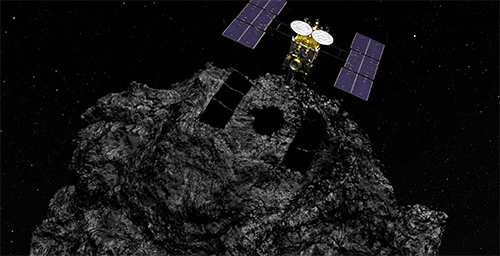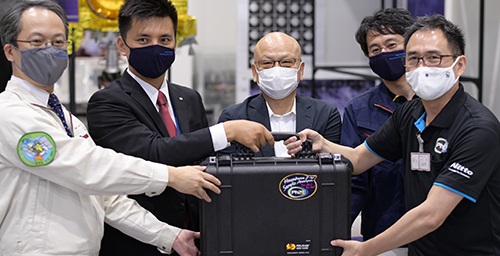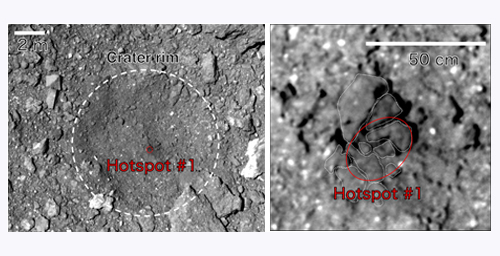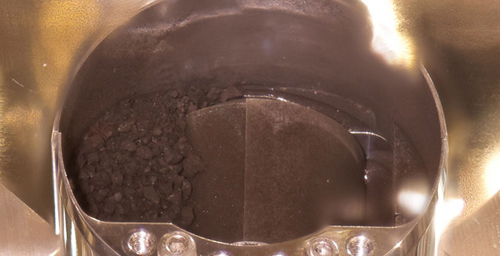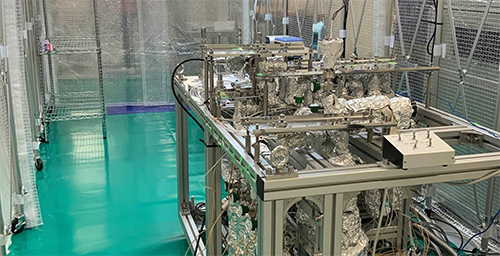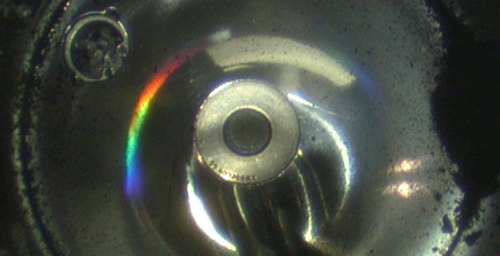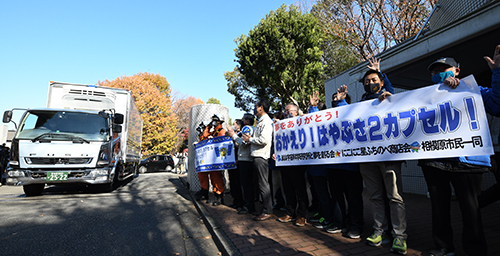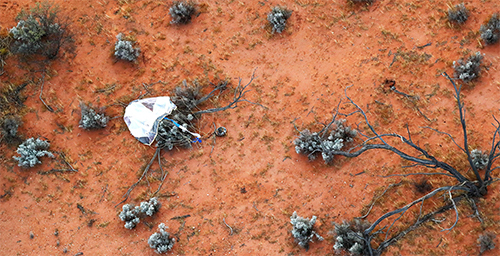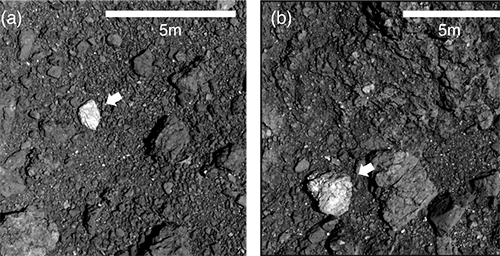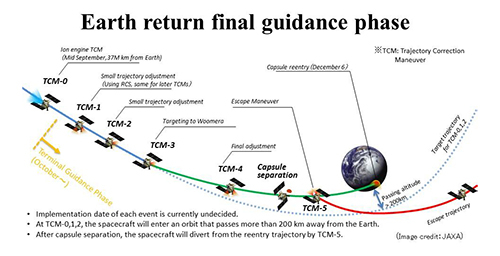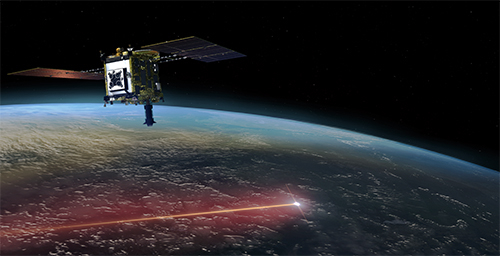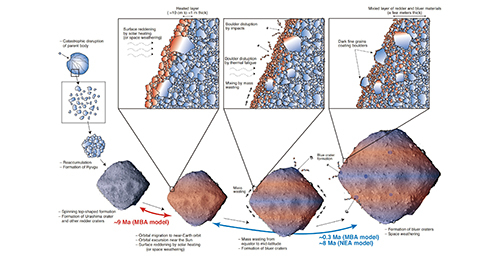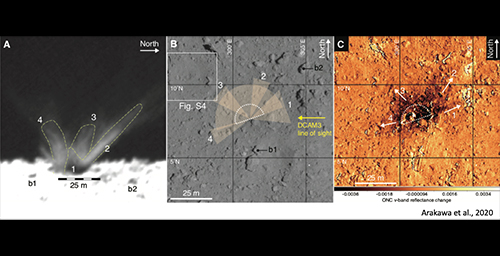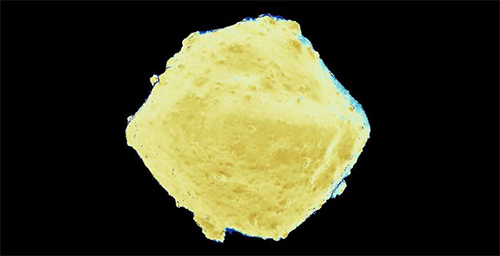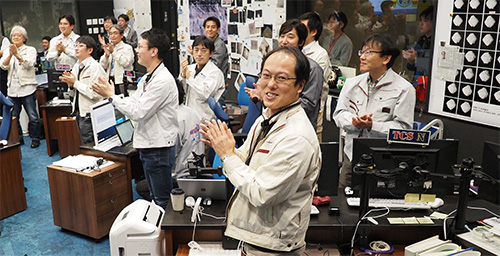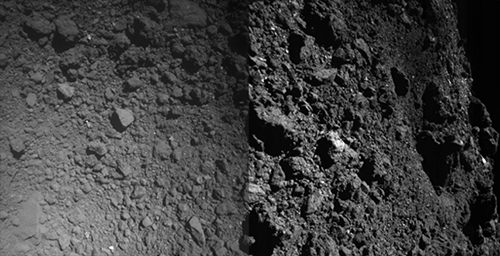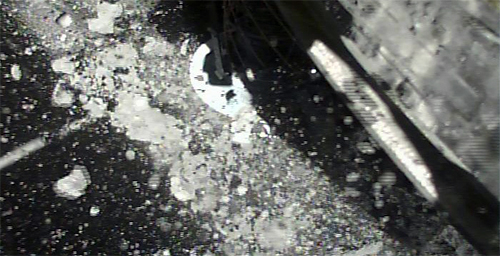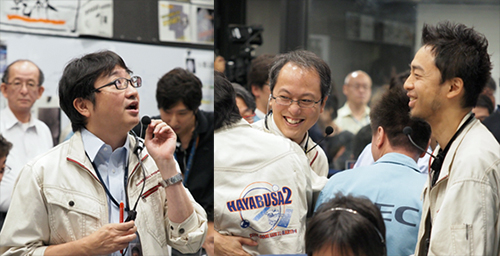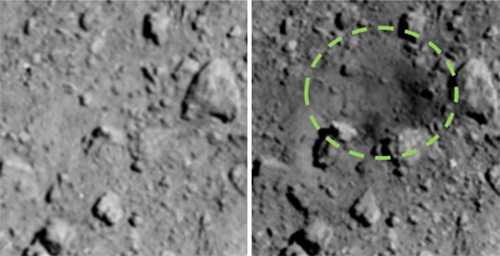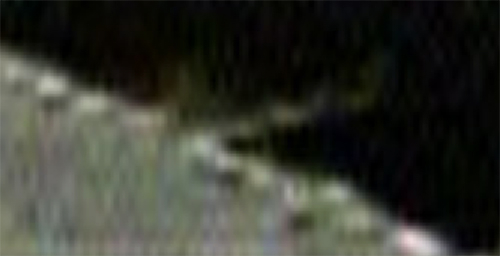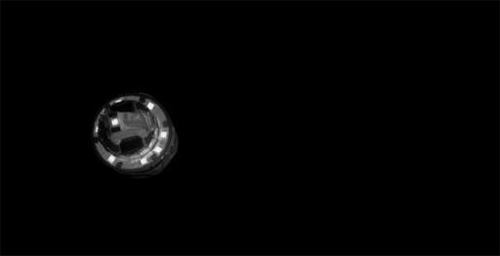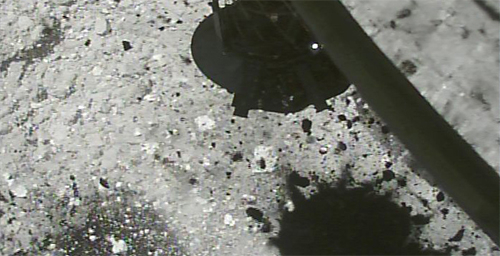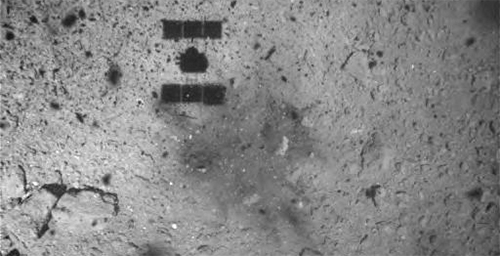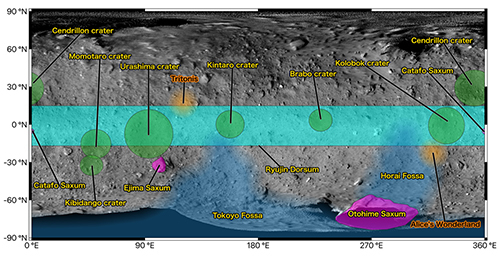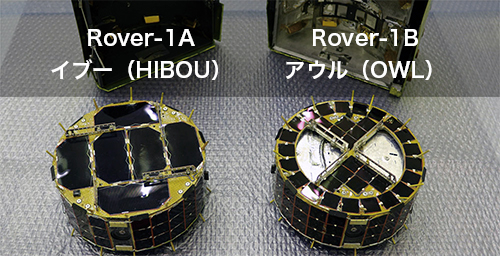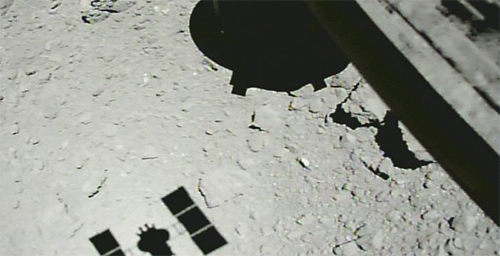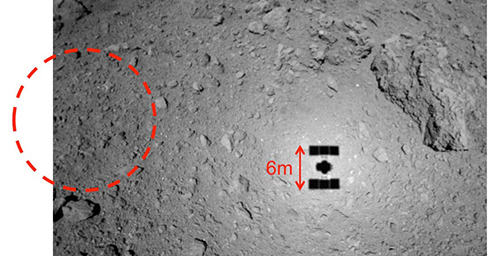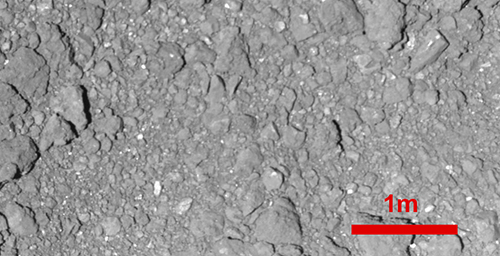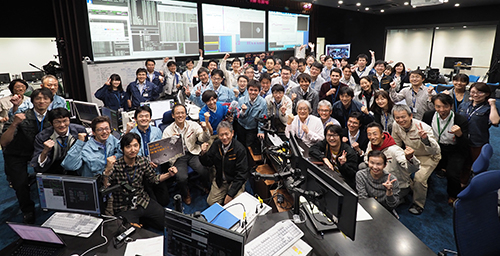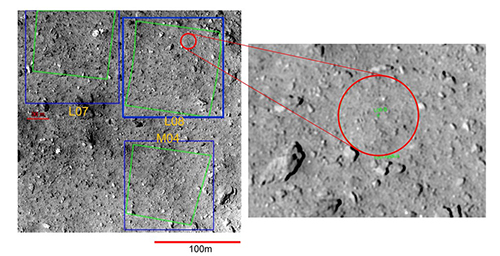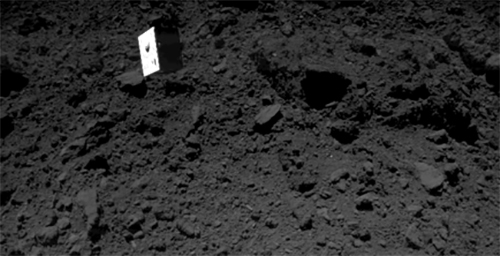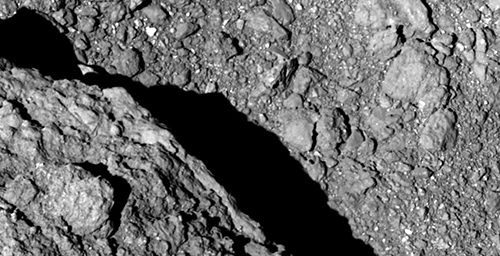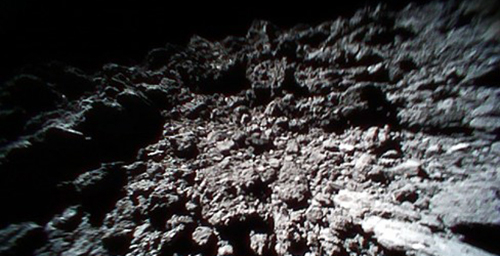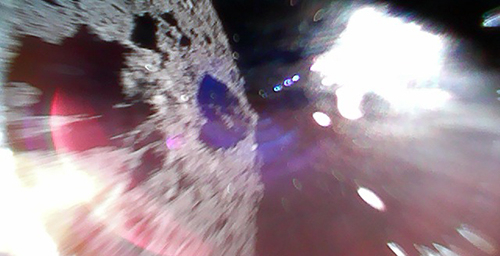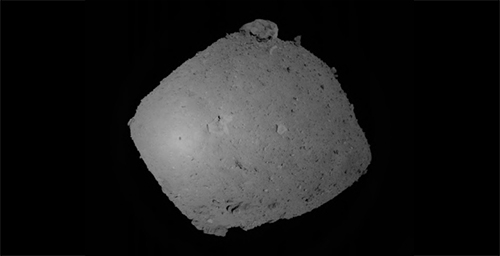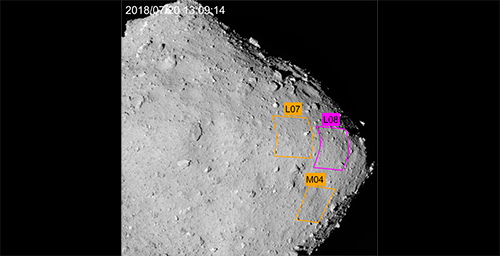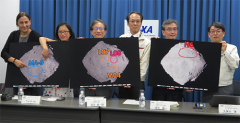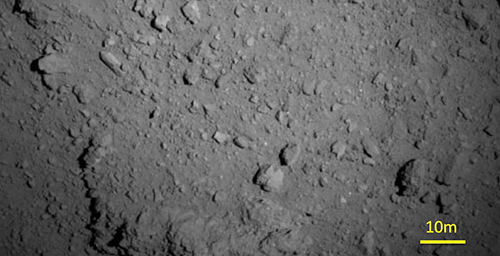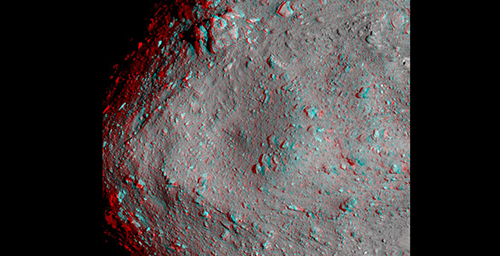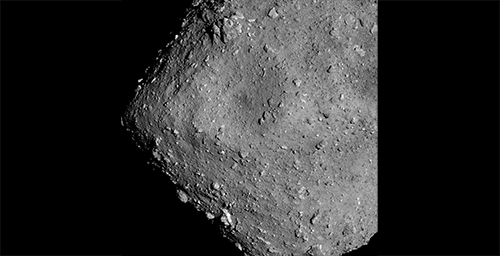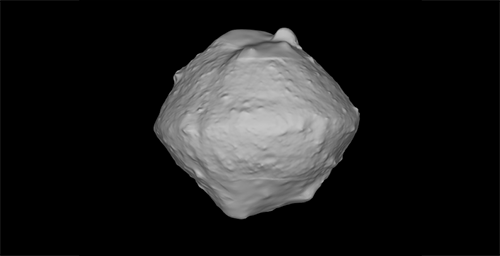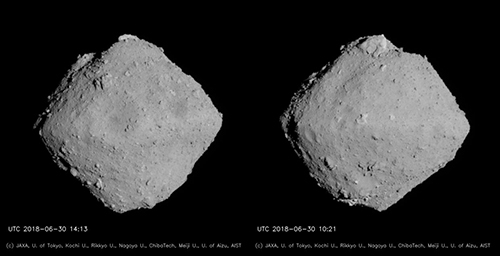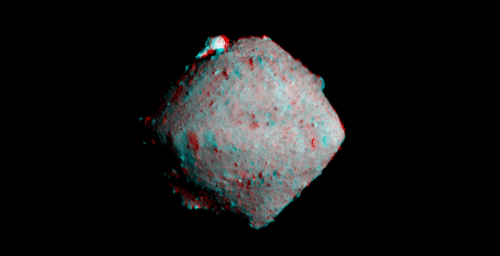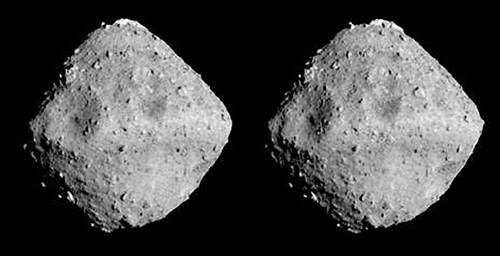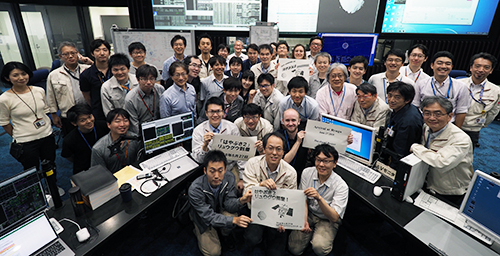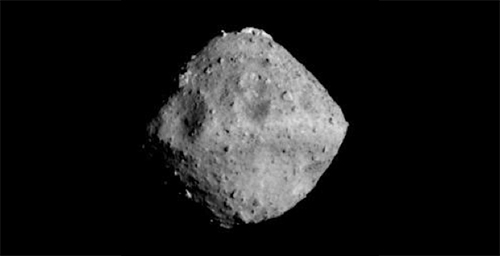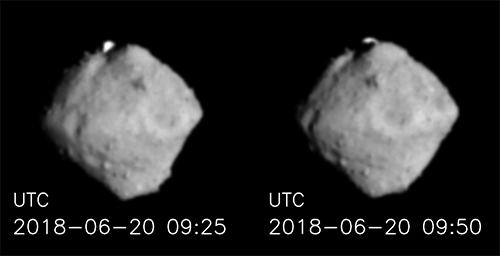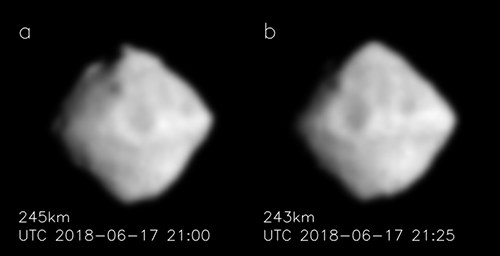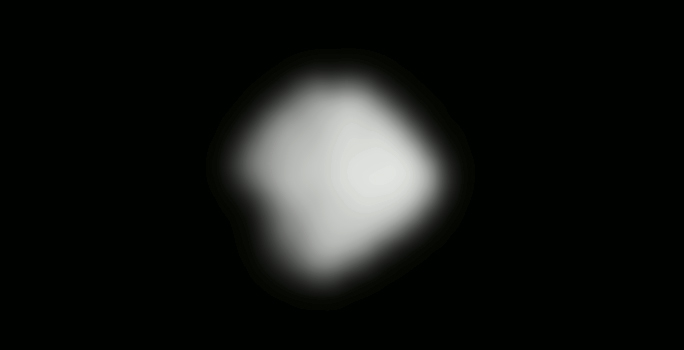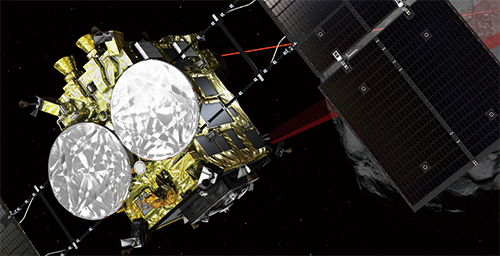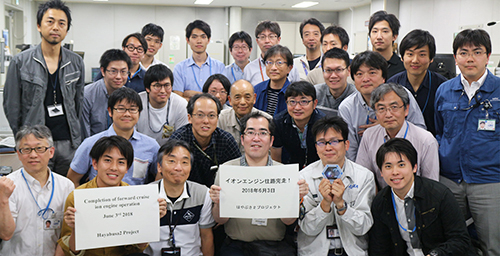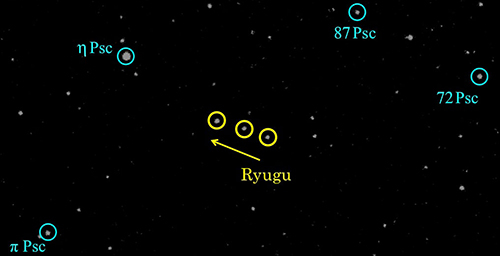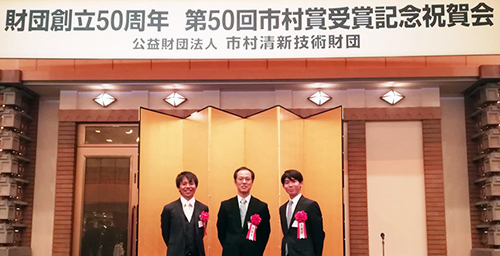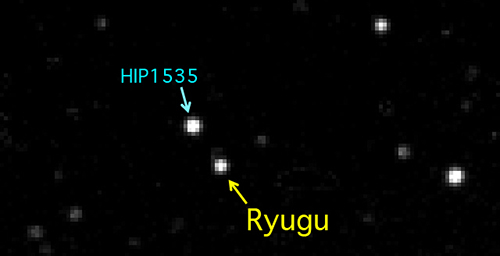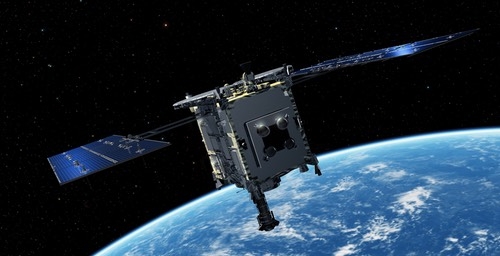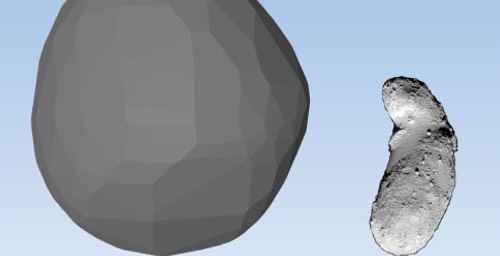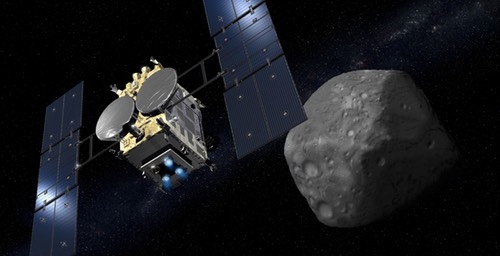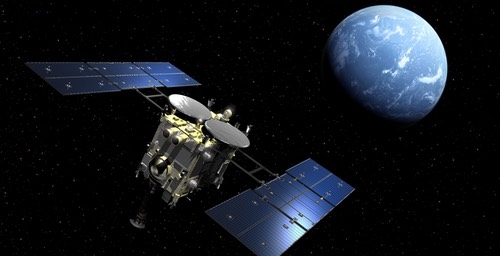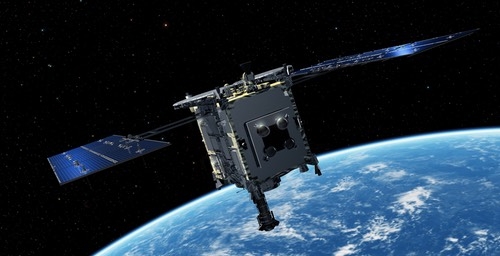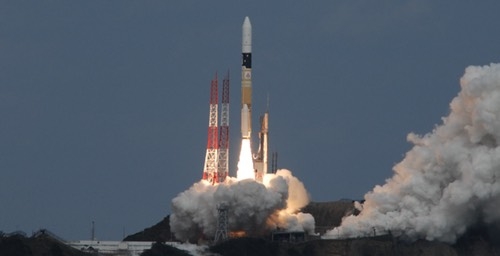© JAXA, University of Tokyo, Kochi University, Rikkyo University, Nagoya University, Chiba Institute of Technology, Meiji University, University of Aizu, AIST, NASA, Dan Gallagher.
Figure 1.: Conceptual organic molecules found in surface samples from the asteroid Ryugu
Key points
- The solvent extractable organic molecules were analyzed by ultra-high resolution mass spectrometry, and found to contain approximately 20,000 organic molecules composed of carbon (C) and hydrogen (H), nitrogen (N), oxygen (O), and/or sulfur (S).
- Using gas and liquid chromatography, amino acids, carboxylic acids, amines, and aromatic hydrocarbons were detected. In particular, the presence of small, highly volatile organic molecules such as methylamine and acetic acid indicates that these molecules are stable as salts on the Ryugu surface.
- Both proteinogenic amino acids (such as alanine) and non-proteinogenic amino acids (such as isovaline) were found. Enantiomeric amino acids having left and right structures were present at approximately 1:1 as racemic mixtures. Hence, the detection of these racemic amino acids are important evidence of abiotic origin.
- Alkylbenzenes and polycyclic aromatic hydrocarbons such as naphthalene, phenanthrene, pyrene, and fluoranthene were the main hydrocarbons. The pattern of their occurrence is similar to that of hydrothermal crude oils on Earth, suggesting that they were influenced by aqueous alteration on the Ryugu parent body.
- In situ analysis of the sample surface sprayed with methanol showed that different organic molecules were present in different spatial distributions, suggesting that the organic compounds may have migrated and separated during the interaction of fluids and minerals on the Ryugu parent body.
- It has been observed that materials are ejected into space from asteroid surfaces by various processes, and organic molecules from Ryugu's surface could be transported to other celestial bodies.
Outline
Soluble organic molecules in the sample of asteroid Ryugu brought back by Hayabusa2 were analyzed mainly by sequential extraction using hydrophobic to hydrophilic solvents. Ryugu is a dark primitive asteroid classified into the C-type asteroid, which is the most common in the asteroid belt, and is rich in hydrous minerals such as carbonaceous chondrite meteorites. Primitive carbonaceous chondrites are known to contain a variety of soluble organic molecules, including amino acids, and might have supplied prebiotic organic molecules to the primitive Earth and other celestial bodies. In this study, organic molecules in Ryugu surface samples obtained from the first touchdown sampling site were analyzed by the international research team from Japan, the U.S., and Europe. Wide variety of organic molecules such as amino acids, amines, carboxylic acids, aromatic hydrocarbons, and nitrogen-containing cyclic compounds were detected (Figure 1). These organic molecules may be released from Ryugu's surface and transported to other celestial bodies in the Solar system.
Paper Title::Soluble organic molecules in samples of the carbonaceous asteroid (162173) Ryugu
Journal:Science
DOI:10.1126/science.abn9033
For more information, please see the JAXA press release.

